Named after the swiftest god in the Roman pantheon, Mercury is a planet small in size but fast in speed. It holds a tight orbit around the Sun and endures blistering heat during the day from its proximity. It’s also disputably our closest neighbour! Just how far away is Mercury from Earth, the Sun, and the other planets? Read on to discover the answer!
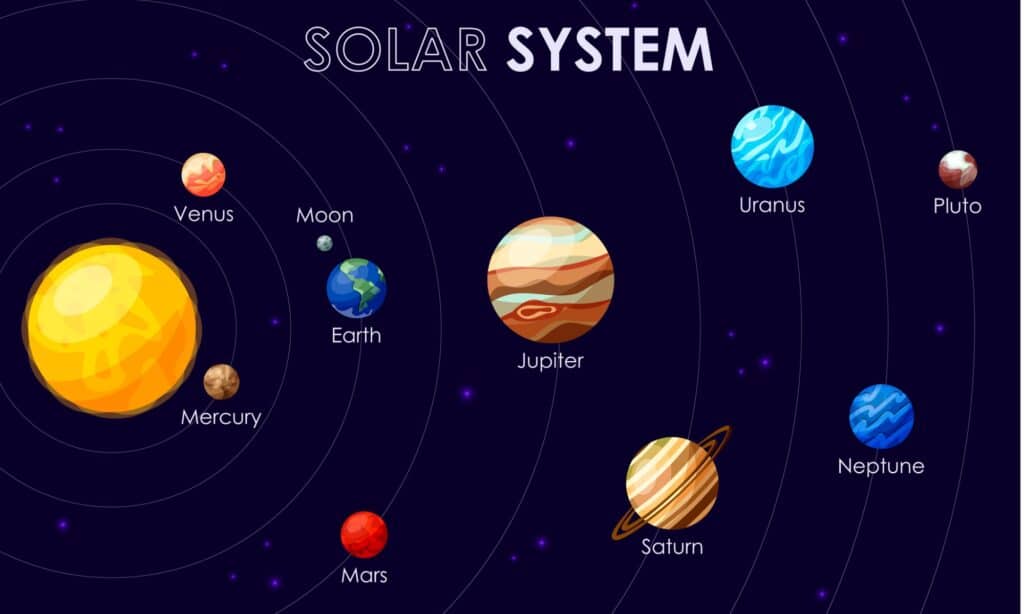
Mercury is the closest planet to the Sun and the first of the terrestrial planets.
©iStock.com/Alexander Timoshin
How Far Away Is Mercury?
Mercury lies an average of 56.97 million miles from Earth and 36 million miles from the Sun. It is the first planet from the Sun and also the first of the terrestrial planets. On average, Mercury is closer to Earth for a longer period than any other planet, though Venus passes slightly closer at its nearest point.
Astronomers also use other units to express distances between celestial bodies. Light years measure the distance light is able to travel in the span of one Earth year. An astronomical unit (AU) is the distance between Earth and the Sun, 93 million miles.
Distance From Mercury to the Sun: 36 Million Miles
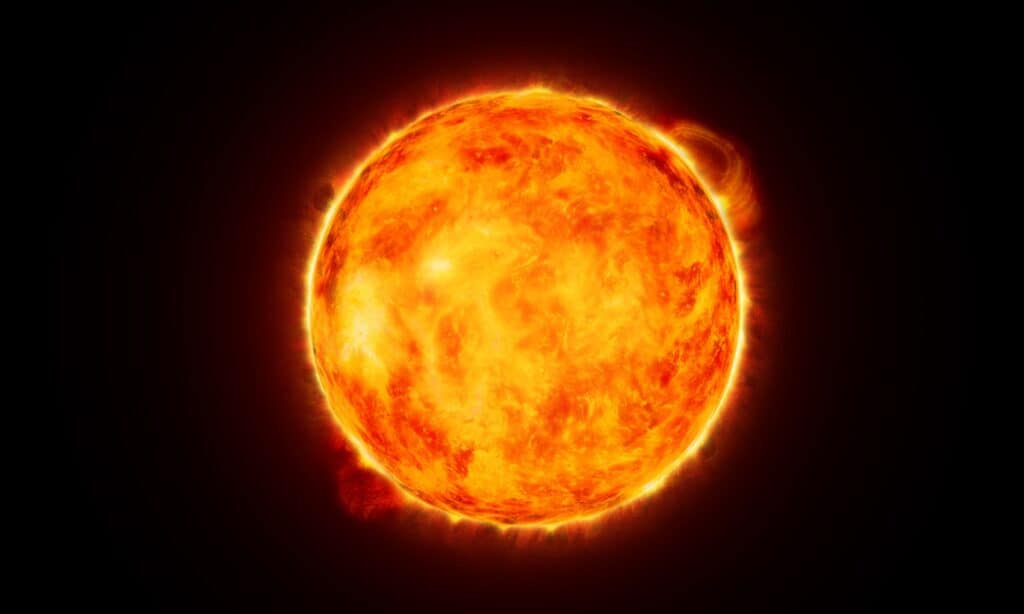
The average distance from Mercury to the Sun is 36 million miles.
©iStock.com/hadzi3
The average distance from Mercury to the Sun is 36 million miles or 0.4 AU. At its closest (perihelion), it lies 28.5 million miles away; at its furthest (aphelion), it lies 43.5 million miles away. Stated another way, it hovers 0.00000612388 light years from our star.
As the smallest planet, Mercury could fit inside the Sun 21.2 million times over! It’s only slightly larger than the Moon with a diameter of 3,031.9 miles. From the planet’s surface, the Sun would appear more than three times as large as on Earth and seven times as bright.
Distance From Mercury to Earth: 56.97 Million Miles
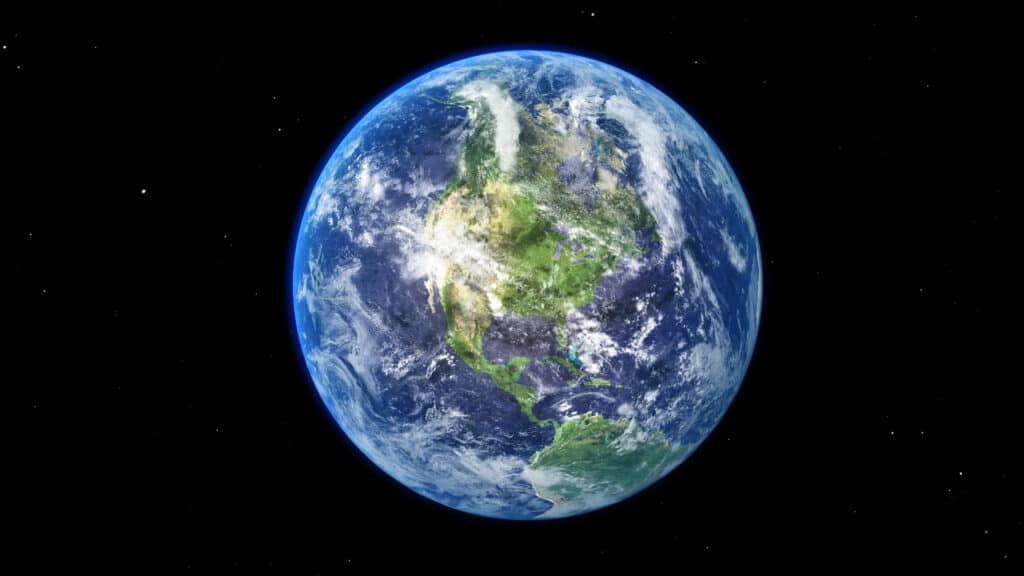
The average distance from Mercury to Earth is 56.97 million miles.
©iStock.com/Thaweesak Saengngoen
The average distance from Mercury to Earth is 56.97 million miles or 0.61 AU. At its closest, it is 48 million miles from Earth; at its furthest, it is 138 million miles from Earth. About 18 copies of the planet would fit inside ours, as it’s only about the width of the Atlantic Ocean. This is about the difference between a baseball and a golf ball. While Mercury has no liquid water, it does have water ice at its perpetually shadowy poles, similar to Earth’s polar regions.
Distance From Mercury to Venus: 31.25 Million Miles
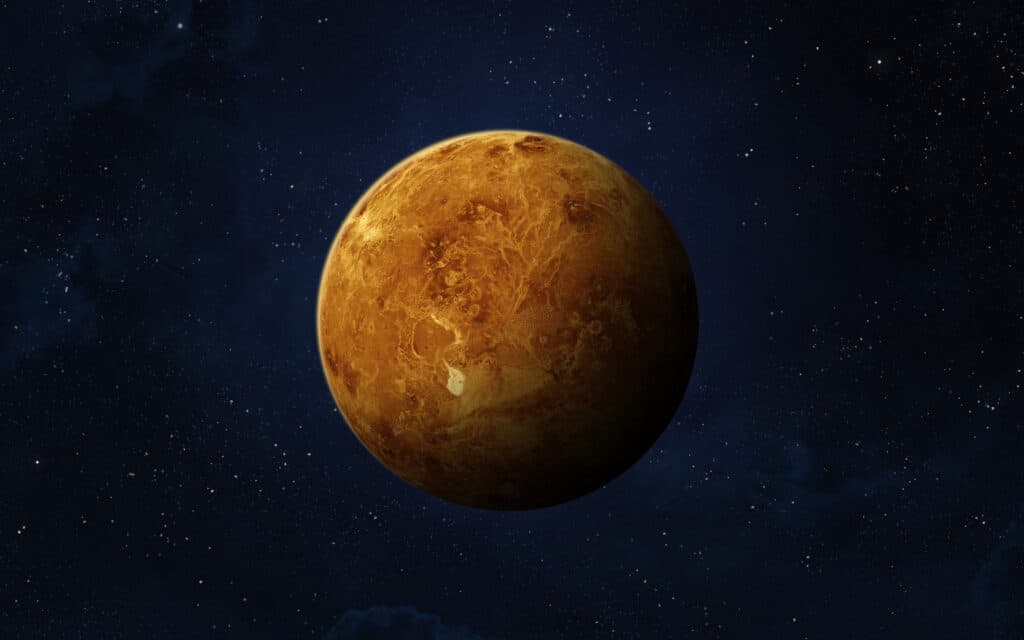
The average distance from Mercury to Venus is 31.25 million miles.
©iStock.com/buradaki
The average distance from Mercury to Venus is 31.25 million miles or 0.34 AU. Venus is the slightly hotter of the two planets, boasting highs up to 872°F (467°C). It also has a much thicker atmosphere composed of 96% carbon dioxide, a greenhouse gas amplifying the heating effect of the Sun. The Mercurial atmosphere by comparison is virtually nonexistent, composed mostly of oxygen, sodium, and hydrogen. Particles from the atmosphere are constantly floating away into space.
Distance From Mercury to Mars: 105.65 Million Miles
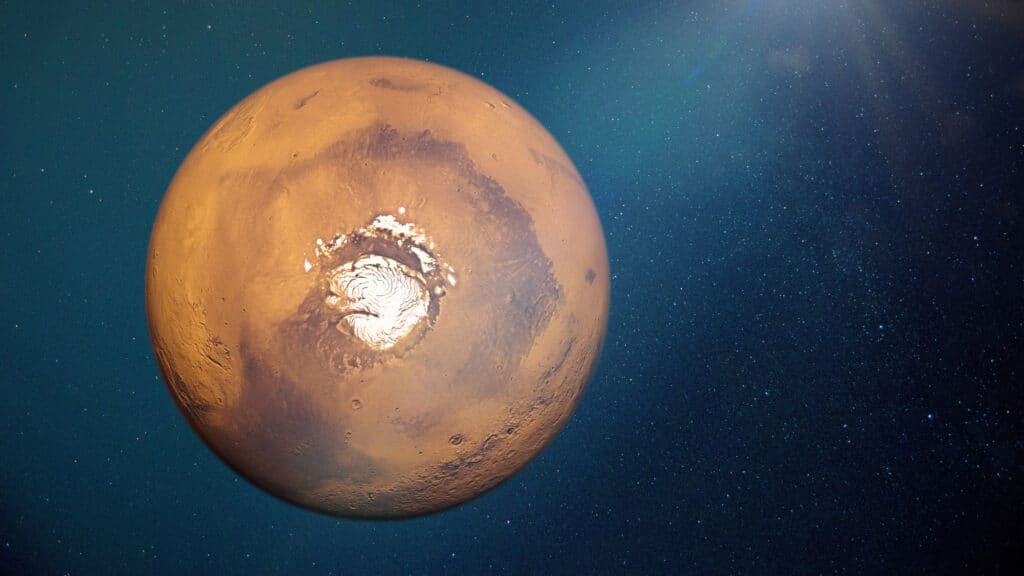
The average distance from Mercury to Mars is 105.65 million miles.
©iStock.com/dottedhippo
The average distance from Mercury to Mars is 105.65 million miles or 1.14 AU. Mars is closer in size to this planet than to any other in the solar system, being only about 1,200 miles larger. Its atmosphere is also extremely thin, composed of more than 95% carbon dioxide and less than 1% oxygen. The iron in its rocks and soil rusts when exposed to air, giving Mars a reddish look. Mercury, on the other hand, appears dark grey due to the graphite in its crust (the same substance as pencil lead).
Distance From Mercury to Jupiter: 447.65 Million Miles
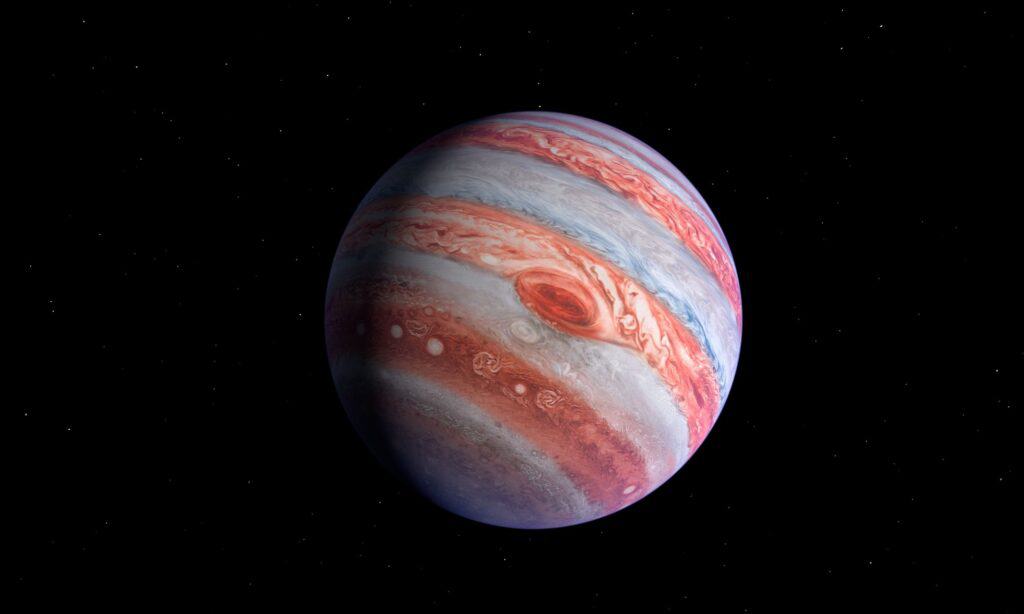
The average distance from Mercury to Jupiter is 447.65 million miles.
©joshimerbin/Shutterstock.com
The average distance from Mercury to Jupiter is 447.65 million miles or 4.82 AU. No two planets in our solar system have a greater size disparity than these. In terms of volume, 24,462 Mercurys can fit inside the mammoth Jupiter. In terms of mass, Jupiter is almost 6,000 times bigger. Its diameter is 30 times that of its tiny cousin at 86,881 miles across.
Jupiter is a planet of storms and intense weather featuring its famous Great Red Spot, a storm bigger than Earth. By contrast, the Mercurial climate is windless and stormless due to its extremely sparse atmosphere.
Distance From Mercury to Saturn: 849.22 Million Miles

The average distance from Mercury to Saturn is 849.22 million miles.
©iStock.com/Elen11
The average distance from Mercury to Saturn is 849.22 million miles or 9.14 AU. This tiniest of planets has neither moons nor rings, though Saturn makes up for that with plenty of both. Saturn’s rings are its distinguishing feature, boasting 7 distinct sections brighter and more complex than those of any other planet. Saturn also has more moons than any other planet in the solar system: 53 confirmed and 29 awaiting official confirmation. Mercurial moons would likely be impossible as the nearby Sun would pull them out of orbit.
Distance From Mercury to Uranus: 1.75 Billion Miles

The average distance from Mercury to Uranus is 1.75 billion miles.
©iStock.com/IncrediVFX
The average distance from Mercury to Uranus is 1.75 billion miles or 18.82 AU. Like the other three Jovian planets Jupiter, Saturn, and Neptune, Uranus lacks a true surface. Instead, its vast atmosphere gives way to a liquid mixture of water, methane, and ammonia. Its core is relatively cool, only about 9,000°F (5,000°C), making it the only planet heated less by its core than by the Sun. This accounts for Uranus’ extremely frigid climate with temperatures as low as -371°F (-224°C).
Distance From Mercury to Neptune: 2.76 Billion Miles

The average distance from Mercury to Neptune is 2.76 billion miles.
©iStock.com/3quarks
The average distance from Mercury to Neptune is 2.76 billion miles or 29.70 AU. Neptune’s year is extremely long, the longest of the eight planets at 165 Earth years. By contrast, the Mercurial year is the shortest of all, lasting just 88 Earth days. The planet’s orbit is smaller than those of other bodies orbiting the Sun because of its close proximity to our star. Despite its short year, however, its day lasts almost 59 Earth days due to its slow rotation on its axis.
How Long Does It Take to Travel to Mercury From Earth?
It took NASA’s Mariner 10 spacecraft only 147 days to travel to Mercury from Earth. This was the first spacecraft to ever visit the planet, arriving on March 29, 1974. It used a gravity assist from Venus to change its trajectory mid-flight. Much later, NASA’s MESSENGER spacecraft took over 6.5 years to enter orbit around the planet on March 11, 2011.
Is Mercury Visible From Earth?
Mercury is visible from Earth with the naked eye, but it’s nearly impossible to see except just before the Sun rises or just after it sets. The planet appears as a star unless viewed through a telescope. The Sun easily obscures this planet and can also cause damage to the eyes during observation. Check out this guide for tips on how to view Mercury optimally and safely.
Has Anyone Ever Set Foot On Mercury?
No human has ever set foot on Mercury. Currently, temperatures are too forbidding for humans to survive on the planet. Only 3 spacecraft have ever visited: Mariner 10, MESSENGER, and BepiColombo. BepiColombo launched on October 20, 2018, and will orbit the planet by 2025. Only MESSENGER has ever touched the surface; however, that was not a landing but rather a crash at the end of its mission.
Mercurial Climate and Lifeforms
Mercury is a planet of extremes, ranging from temperatures as high as 800°F (430°C) during the day to temperatures as low as -290°F (-180°C) during the night. This is because the planet has no atmosphere to retain heat – the same reason why atmosphere-rich Venus is typically hotter despite being further from the Sun. Scientists have detected no lifeforms on Mercury, nor are any likely due to the extreme temperatures and intense radiation.
Despite being the smallest planet, Mercury affords rich opportunities for observation and study and, hopefully, future visits.
Check out this article on “How Much You’d Weigh On Mercury.”
Thank you for reading! Have some feedback for us? Contact the AZ Animals editorial team.








